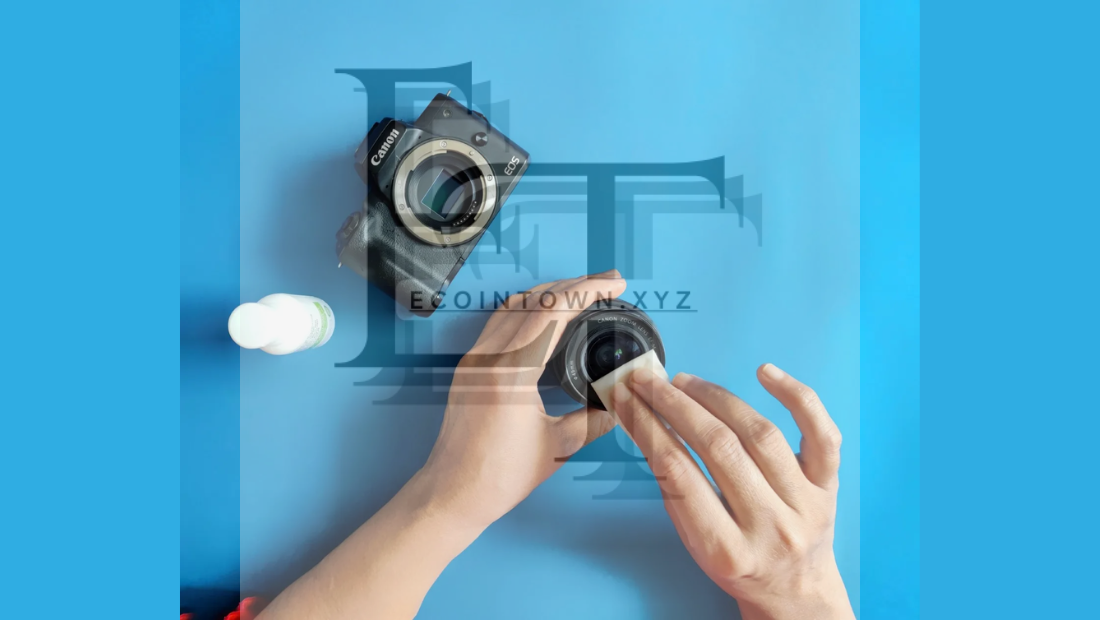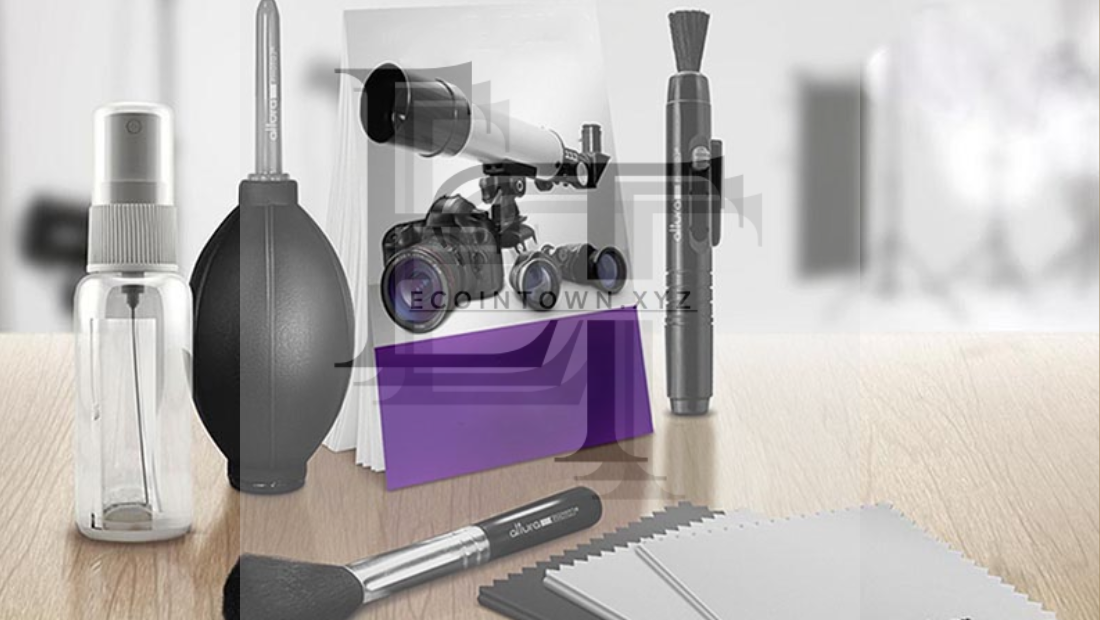As a photographer, your camera gear is your most essential tool. Whether you’re capturing fleeting moments during a wedding, photographing wildlife in the wild, or shooting a commercial project, the performance of your equipment can make or break your results. One of the most critical aspects of maintaining your gear is ensuring it remains clean and in optimal condition. Over time, lenses can accumulate dust, fingerprints, and moisture, while sensors and camera bodies can attract dirt and other particles. That’s where a high-quality cleaning kit comes into play.
A cleaning kit is essential for preserving your equipment and ensuring your photos maintain the highest quality. Regular maintenance with the right tools will help protect your gear from damage, prevent performance issues, and even extend the lifespan of your camera and lenses. In this article, we’ll discuss the must-have features of a cleaning kit for photographers, and why having the right tools on hand can make cleaning your equipment easier and more effective.
1. Why Clean Your Camera Gear Regularly?
Before diving into the must-have features of a cleaning kit, it’s important to understand why regular cleaning is necessary for your camera gear. The build-up of dust, smudges, and moisture can interfere with both the performance and the quality of your shots. Here’s why cleaning your equipment regularly is crucial:
a. Maintaining Optics Quality
Lenses are one of the most important parts of your camera, and their performance directly affects image quality. Dust, smudges, or water spots on your lens can cause blurry or soft images, unwanted reflections, and even lens flare. Ensuring that your lens is free of debris is key to sharp, clear photos.
- Tip: Always keep your lenses clean to ensure that you’re capturing the sharpest images possible. Smudges or dust on the lens can reduce image quality, particularly in low-light situations.
b. Protecting the Camera Sensor
Dust particles on your camera sensor can show up in your photos as spots or blotches, especially when shooting at smaller apertures (high f-stop numbers). While most modern cameras have built-in dust removal systems, it’s still essential to clean your sensor regularly to avoid contamination.
- Tip: Use proper cleaning tools when cleaning your sensor to avoid causing scratches or damaging the delicate surface.
c. Preventing Performance Issues
Dust, dirt, and moisture can interfere with your camera’s mechanics, particularly in the lens mount, sensor, and other moving parts. Regular cleaning helps ensure that the internal components stay dust-free and function smoothly.
- Tip: Use blower brushes or cleaning cloths to remove debris before it affects the internal mechanisms of your camera.
2. Must-Have Cleaning Kit Features for Photographers
A cleaning kit tailored to photographers should contain a variety of specialized tools that can address the unique cleaning needs of your camera and lenses. Below are the essential components of a good camera cleaning kit.
a. Lens Cleaning Brush
A lens cleaning brush is one of the most essential tools for any photographer. This small, soft-bristled brush allows you to gently remove dust and debris from your lens without scratching the surface. It’s particularly useful for cleaning the front element of your lens before wiping it with a cloth.
- Why it’s essential: Brushes are ideal for removing dry, loose dust particles without pushing them into the lens or scratching the glass. A retractable brush often works best for portability and hygiene.
- Tip: Always use a soft-bristled brush to avoid damaging the lens surface. Don’t use brushes on the camera body or sensors directly, as the bristles may leave residue.

b. Air Blower (Rocket Blower)
A rocket blower is an essential tool for photographers, especially for cleaning out the camera body and sensor. It allows you to blow dust and particles away from your gear without physically touching the lens or sensor, reducing the risk of scratches or damage. This is an essential item to have in your cleaning kit.
- Why it’s essential: The rocket blower creates a stream of air powerful enough to remove dirt and dust from delicate components but gentle enough not to damage your camera. It’s perfect for cleaning the lens, camera body, and sensor.
- Tip: Avoid using your mouth to blow air on your lens or sensor, as this can introduce moisture. Use a rocket blower for more controlled and effective air pressure.
c. Microfiber Cleaning Cloths
Microfiber cleaning cloths are crucial for removing smudges, fingerprints, and other marks from your lens and camera body. Microfiber is soft, non-abrasive, and won’t scratch delicate surfaces, making it the best material for cleaning optics.
- Why it’s essential: Microfiber cloths are designed to lift and trap dirt and oil without leaving lint behind, which is important for maintaining the integrity of your gear and producing clean, clear images.
- Tip: Have multiple microfiber cloths in your kit to prevent transferring dirt from one part of the gear to another. Regularly wash them to maintain their effectiveness.
d. Lens Cleaning Solution
When your lens is covered in stubborn fingerprints, smudges, or oil, it’s time to use a lens cleaning solution. These solutions are formulated specifically for camera lenses and will break down grease and smudges without damaging the lens coating.
- Why it’s essential: Lens cleaning solution is safe to use on camera optics and will help remove fingerprints, grease, and other contaminants from your lenses. It’s best used in combination with a microfiber cloth or lens tissue.
- Tip: Always apply the cleaning solution directly to the cloth, not the lens, to prevent drips that could get inside the lens housing or on the sensor.
e. Sensor Cleaning Swabs
The sensor is one of the most delicate parts of a camera, and dust or particles on it can cause spots in your images. Sensor cleaning swabs are designed to clean your camera’s sensor safely. These swabs are pre-moistened or can be paired with cleaning solution for effective dust removal.
- Why it’s essential: Sensor cleaning swabs are specially designed to be gentle yet effective at cleaning the camera sensor without scratching or damaging it. They allow photographers to clean the sensor with precision.
- Tip: Always follow the manufacturer’s instructions when cleaning the sensor. Use a blower to remove large debris before using a sensor cleaning swab.
f. Lens Tissue Paper
Lens tissue paper is another important item to include in your cleaning kit. It’s specifically designed for cleaning delicate optics without leaving behind fibers or residues, making it perfect for wiping down lenses after using a cleaning solution.
- Why it’s essential: Lens tissues are thin, lint-free, and often more absorbent than regular paper towels, making them ideal for cleaning lenses without leaving streaks.
- Tip: Use lens tissue paper for final cleaning after applying lens cleaning solution. Avoid using regular tissues or cloths, as they can leave behind fibers or residues.
g. Cleaning Pen with Carbon Tip
A cleaning pen with a carbon tip is another valuable tool in your cleaning kit. The carbon tip is designed to gently remove fingerprints and smudges from lenses without leaving any streaks or residue. It’s great for those times when you need a quick and effective cleaning solution on the go.
- Why it’s essential: The carbon tip is designed for lens cleaning and works particularly well for removing stubborn smudges, as it attracts and absorbs oil and dirt.
- Tip: Use the cleaning pen for quick touch-ups when you don’t have time to clean the lens with a cloth or solution.
3. Tips for Properly Maintaining Your Camera Gear
Having a cleaning kit is only half the battle. To ensure that your camera and lenses remain in top condition, it’s important to follow these cleaning practices:
a. Use the Right Tools for the Job
It’s essential to use the correct tools for each part of your camera gear. For example, a lens brush is great for dusting off lenses, while a rocket blower should be used for cleaning the camera body and sensor. Avoid using rough or inappropriate materials that could scratch your lenses or sensor.
b. Store Your Gear Properly
When not in use, keep your camera and lenses in a protective case to prevent dust and dirt from accumulating on them. This will reduce the frequency of cleaning and help preserve the integrity of your equipment.
- Tip: Use air-tight storage bags or dry cabinets to protect your gear from humidity and dust, particularly in harsh environments.
c. Clean Your Gear Regularly
Frequent cleaning is key to maintaining the performance and longevity of your equipment. Dust, fingerprints, and other particles can accumulate quickly, especially if you’re shooting outdoors or in humid environments.
- Tip: Keep your cleaning kit handy so you can perform quick clean-ups in between shoots. This helps prevent dirt and debris from building up over time.
d. Be Gentle and Thorough
When cleaning your lens, camera body, or sensor, always be gentle and thorough. Avoid using excessive pressure, as this can cause scratches or push dust further into crevices that are difficult to clean.
- Tip: Always blow off excess dust before wiping your gear, and use gentle strokes to clean delicate surfaces.
4. Conclusion
A camera cleaning kit is an essential tool for any photographer looking to maintain the quality and longevity of their gear. From lens cleaning brushes and microfiber cloths to sensor swabs and air blowers, each component of your cleaning kit serves a critical function in keeping your camera and lenses free of dirt, dust, and smudges. Regular cleaning not only improves the quality of your images but also helps protect your investment and ensures that your equipment continues to perform at its best.
By incorporating the right cleaning tools into your photography routine, you’ll be able to tackle common issues like glare, lens flare, and dust spots, and keep your camera in pristine condition for years to come. So, equip yourself with a comprehensive cleaning kit and make protecting your camera gear a priority—it’s an investment that will pay off in the clarity, sharpness, and longevity of your photos.
